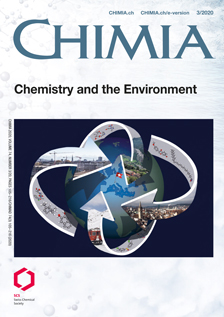UVB-irradiated Laboratory-generated Secondary Organic Aerosol Extracts Have Increased Cloud Condensation Nuclei Abilities: Comparison with Dissolved Organic Matter and Implications for the Photomineralization Mechanism
DOI:
https://doi.org/10.2533/chimia.2020.142PMID:
32197672Keywords:
Cloud condensation nuclei, Dissolved organic matter, Photochemistry, Photomineralization, Secondary organic aerosolAbstract
During their atmospheric lifetime, organic compounds within aerosols are exposed to sunlight and undergo photochemical processing. This atmospheric aging process changes the ability of organic aerosols to form cloud droplets and consequently impacts aerosol–cloud interactions. We recently reported changes in the cloud forming properties of aerosolized dissolved organic matter (DOM) due to a photomineralization mechanism, transforming high-molecular weight compounds in DOM into organic acids, CO and CO2. To strengthen the implications of this mechanism to atmospheric aerosols, we now extend our previous dataset and report identical cloud activation experiments with laboratory-generated secondary organic aerosol (SOA) extracts. The SOA was produced from the oxidation of α-pinene and naphthalene, a representative biogenic and anthropogenic source of SOA, respectively. Exposure of aqueous solutions of SOA to UVB irradiation increased the dried organic material's hygroscopicity and thus its ability to form cloud droplets, consistent with our previous observations for DOM. We propose that a photomineralization mechanism is also at play in these SOA extracts. These results help to bridge the gap between DOM and SOA photochemistry by submitting two differently-sourced organic matter materials to identical experimental conditions for optimal comparison.
Downloads
Published
How to Cite
Issue
Section
License
Copyright (c) 2020 Nadine Borduas-Dedekind, Sergey Nizkorodov, Kristopher McNeill

This work is licensed under a Creative Commons Attribution-NonCommercial 4.0 International License.







